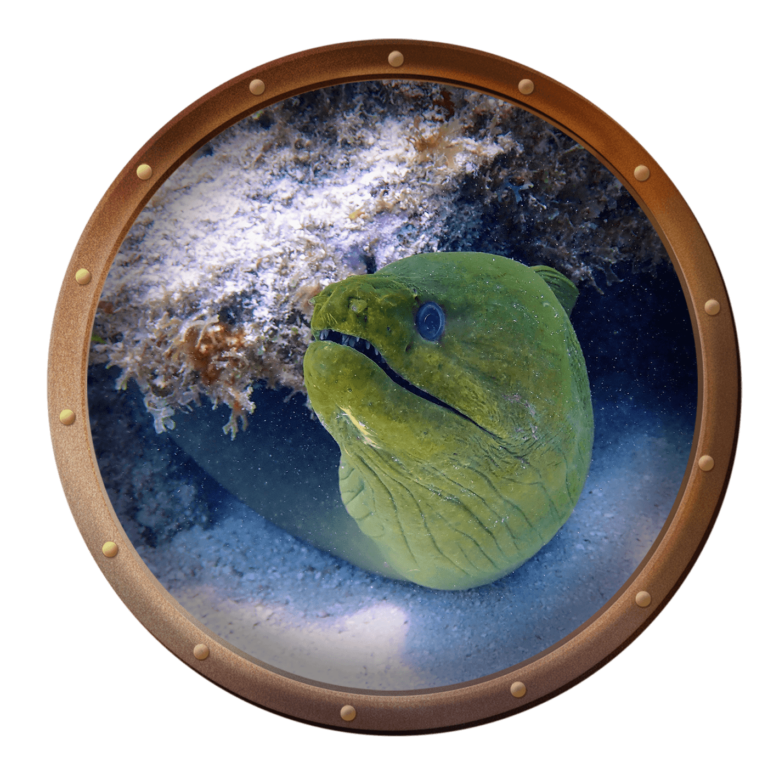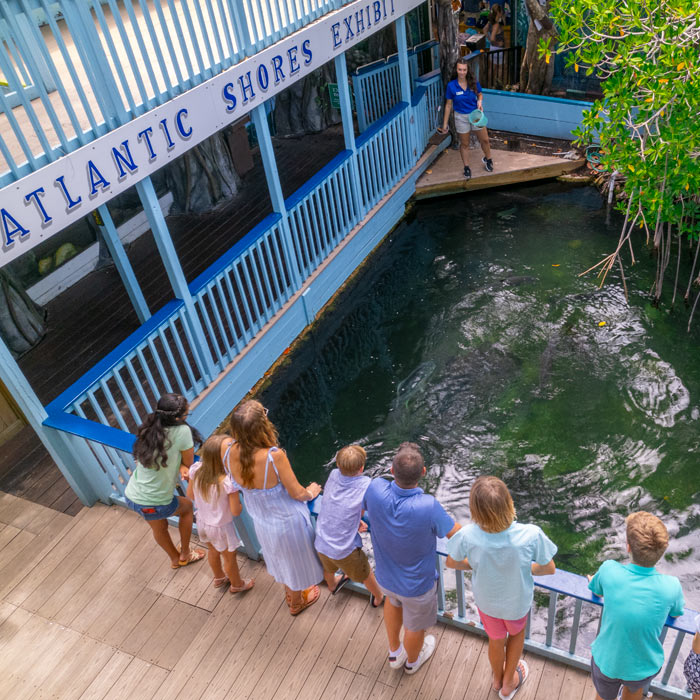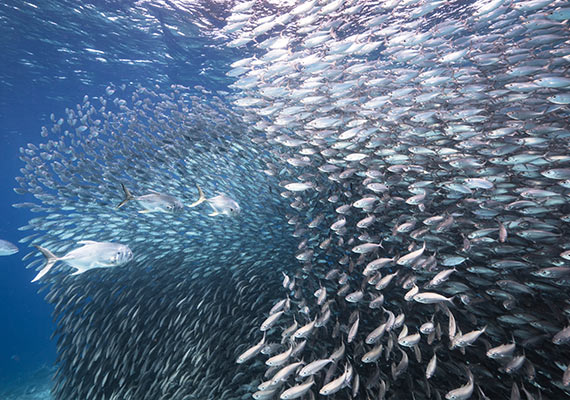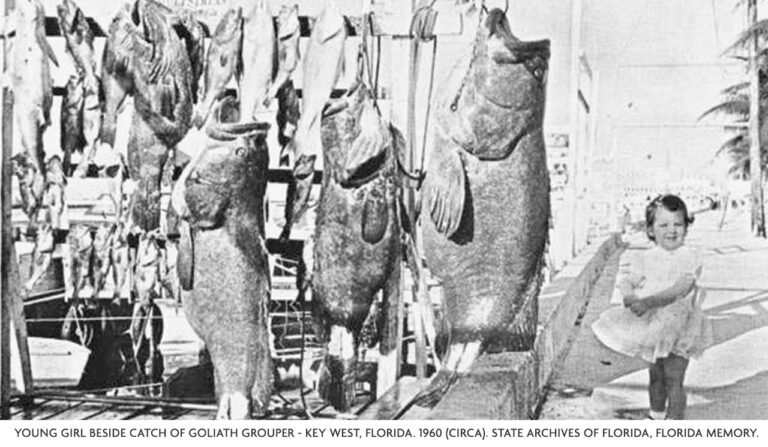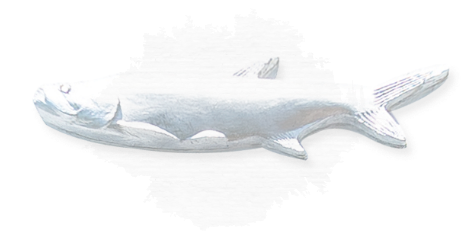Atlantic Shores Game Fish and Sharks Tour
10:45 am | 1:15 pm | 4:15 pm
The 50,000-gallon Atlantic Shores exhibit is a slice of our Florida Keys coastline and houses nurse sharks, tarpon, grouper, jacks, and even a sea turtle! Guests will learn about our mangrove ecosystems and the fish in the exhibit while watching the animals eat.
The Atlantic Shores Exhibit is a 50,000 gallon functioning mangrove ecosystem. If you drove down to Key West, you may have noticed that the Keys don’t have many beaches. That is something that is surprising to many people when they visit. We are used to thinking about Florida and tropical islands as surrounded by beautiful white sandy beaches, but the Florida Keys are built differently. The Keys were formed by an ancient barrier reef and sandbars that were underwater 125,000 years ago. Sea level dropped during the last ice age, exposing the corals and sand to the air. The corals died but left their limestone skeletons behind. This new real estate was then colonized by the very special trees that line this exhibit. Mangroves are trees that are able to grow in salt water, something no other trees can do. Plants and salt usually do not go well together, but mangrove trees have adaptations that allow them to thrive here.
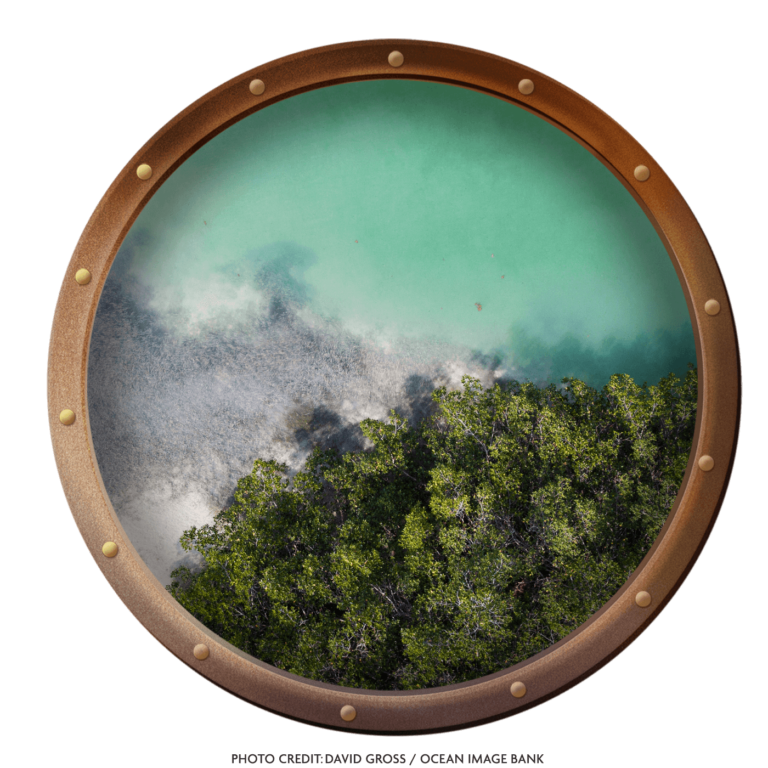
The Florida Keys have three species of mangroves: red, black, and white. Red mangroves, Rhizophora mangle, are the most common species and grow along the shore of the 1,700 islands that make up the Florida Keys. They are able to live in salt water thanks to their specialized roots. Red mangroves are known as salt excluders; their roots keep out 90% to 97% of the salt right at the root surface. The tree is able to tolerate the remaining salt and eventually loses it as leaves and bark drop off. The bottom roots of the red mangrove are called prop roots, as they prop the trunk of the trees up out of the water. The roots stabilize the coastline and collect sediment, which in turn creates new topsoil and prevents erosion. Without the mangrove trees, the Florida Keys would have eroded away a long time ago due to the waves, wind and storms that consistently hit the coastline. The roots are also a vital nursery habitat for many of our fish. Juvenile fish spend the first part of their lives hiding in the complicated root systems of the mangroves where larger fish can’t fit. Lots of small crustaceans and algae grow on the roots, which the baby fish eat until they grow large enough to survive in deeper waters.
What fish are in the Atlantic Shores exhibit?
Nurse shark, Ginglymostoma cirratum
This species is the most common shark in the Florida Keys. They prefer shallow mangrove, seagrass, and coral reef habitats, which the Florida Keys have in abundance. Nurse sharks are nocturnal and gregarious; they often spend the day sleeping in groups underneath mangrove roots and reef ledges and become more active at night.
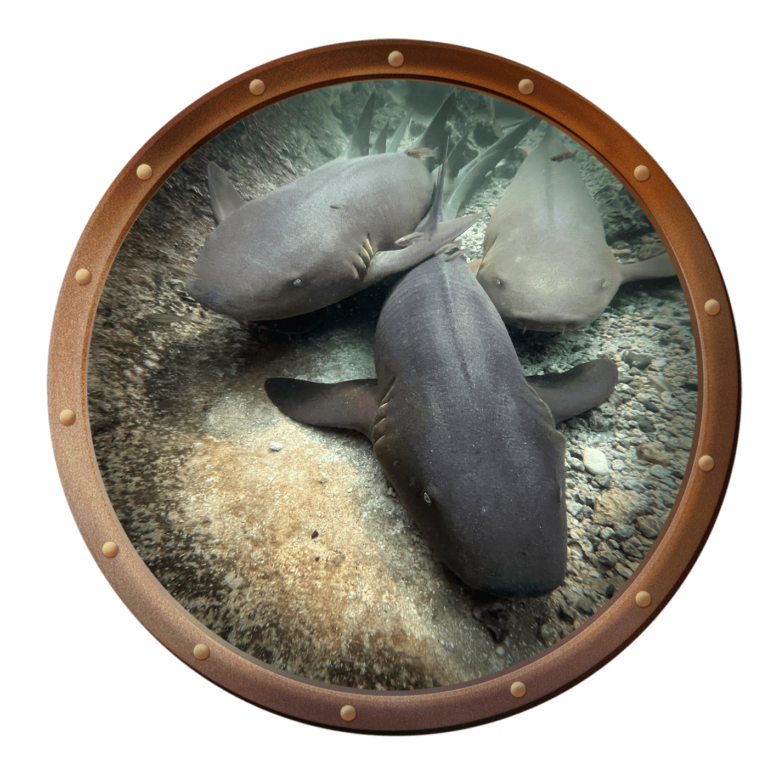
Tarpon, Megalops atlanticus
Tarpon, Megalops atlanticus, are long fish with large eyes and upturned mouths. They have bright silvery scales on their sides, giving them the nickname “Silver King.” These fish begin their lives in shallow water, low-oxygen mangrove lagoons or backwater creeks. They are able to grow larger and continue to hunt in these habitats for much longer than other predatory fish species due to a very special adaptation — they can breathe air! They can take gulps of air at the surface and pass it over the “labyrinth organ” in their swim bladder, which acts as a primitive lung. This not only lets them live in low-oxygen environments, but it also makes them a very popular sport fish. It can take hours to land a tarpon because they re-energize themselves every time they break the surface of the water.
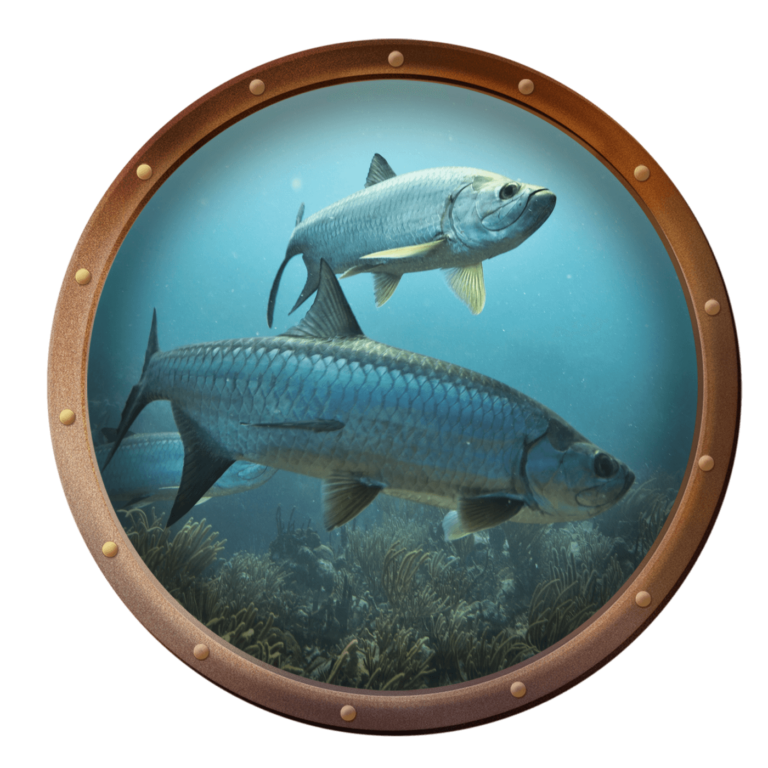
If you would like to go tarpon fishing, you are in the right place! You just need a fishing license and need to make sure that you do not take the fish out of the water. They are strictly catch-and-release unless you are seeking a record.
The Florida state record for tarpon caught with conventional tackle was set here in Key West in 1975. Gus Bell caught a 243-pound tarpon on just a 20-pound test line! The guide was Captain Bob West, who also donated three of the tarpon in this exhibit to the Key West Aquarium in 1963.
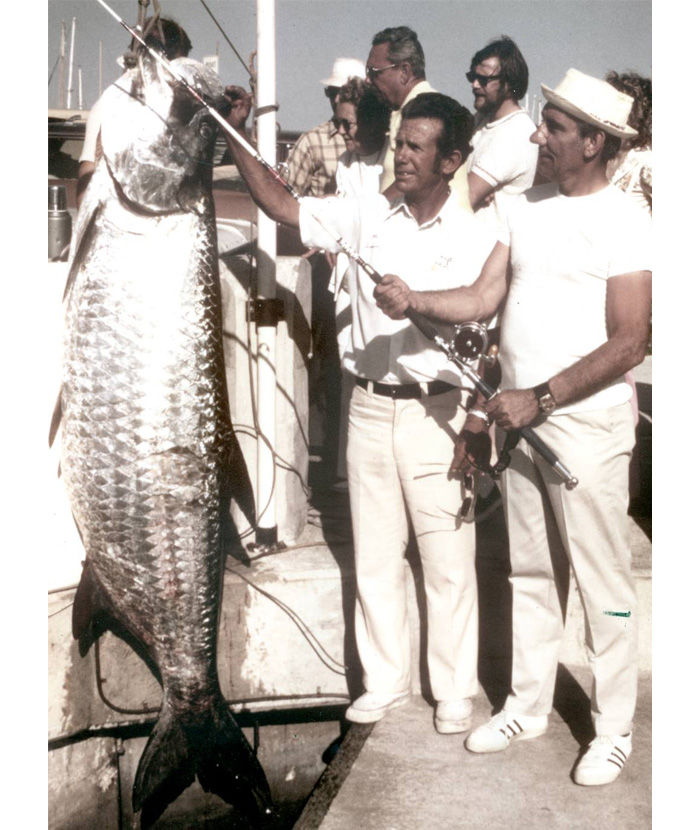
Crevalle jacks, Caranx hippos
Crevalle jacks, Caranx hippos, have a distinct black spot on their operculum (gill cover) and a patch behind their eyes that looks like blue eyeshadow. This is called the adipose eyelid and acts like sunglasses and goggles for these fish. Crevalle jacks can reach speeds of 15 mph when they dart into schools of baitfish, and it is thought that this eyelid protects their eyes from damage. It may even act as a form of sunglasses by providing protection from ultraviolet radiation.
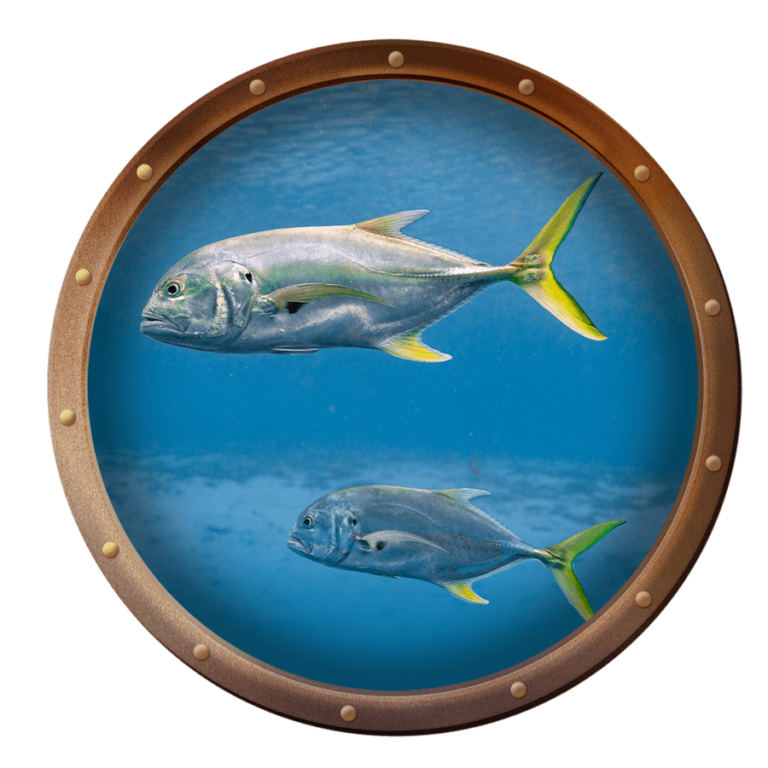
Horse-eye jacks, Caranx latus
Horse-eye jacks, Caranx latus, are also known as big-eye jacks due to their large eyes. These fish often form schools with young crevalle jacks, and you may see these two species swimming together in the exhibit. In addition to their large eyes, horse-eye jacks can be identified by the dark scutes that run along their sides just in front of a yellow tail.
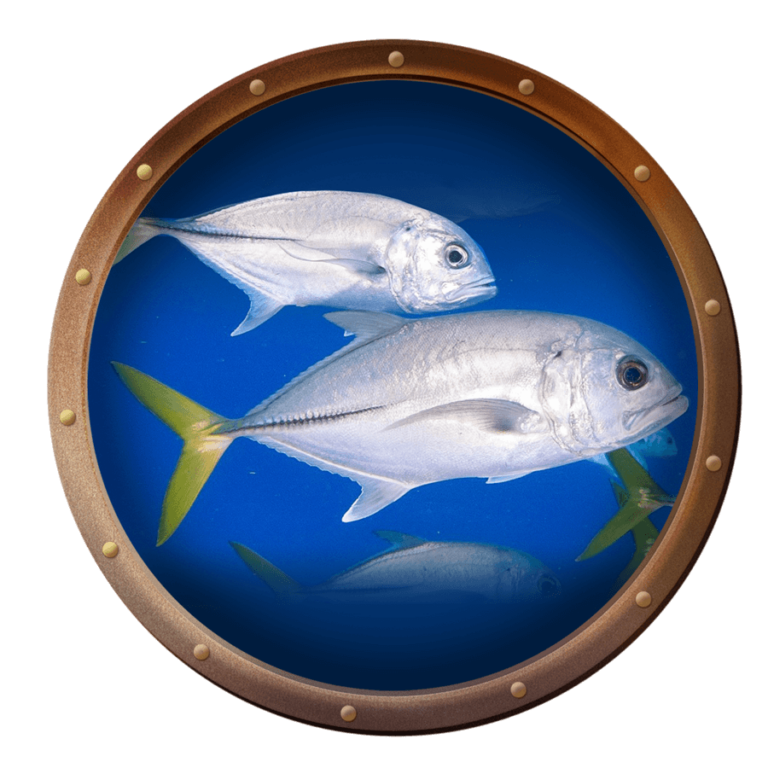
Lookdown, Selene vomer
This fish is named for its distinctive sloped forehead. They often form schools in shallow coastal waters where they feed on invertebrates and fish.
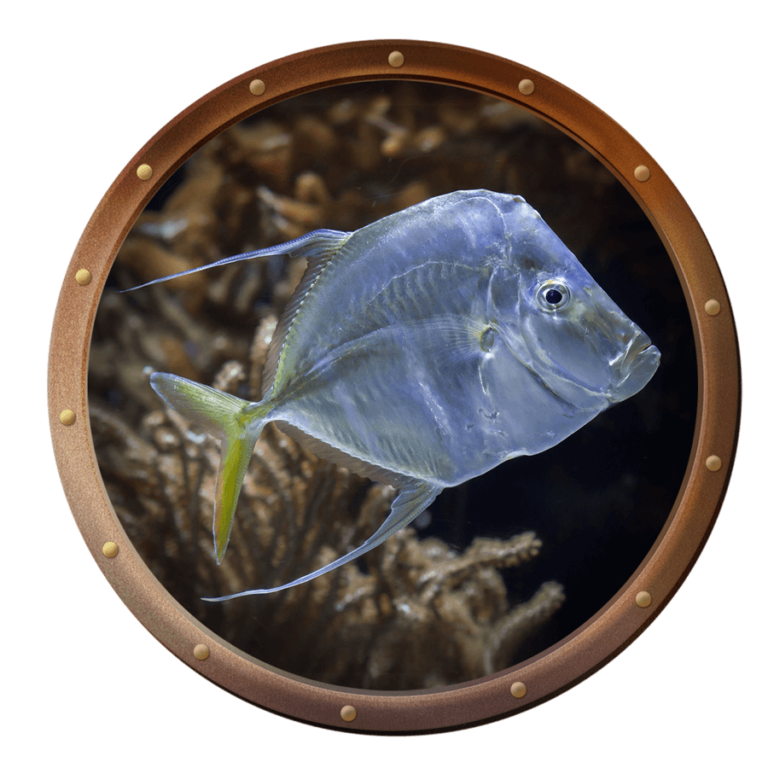
Goliath grouper, Epinephelus itajara
The goliath grouper is the largest Atlantic grouper species. This fish can reach 800 pounds 8 feet in length and is estimated to have a 50- to 100-year life span.
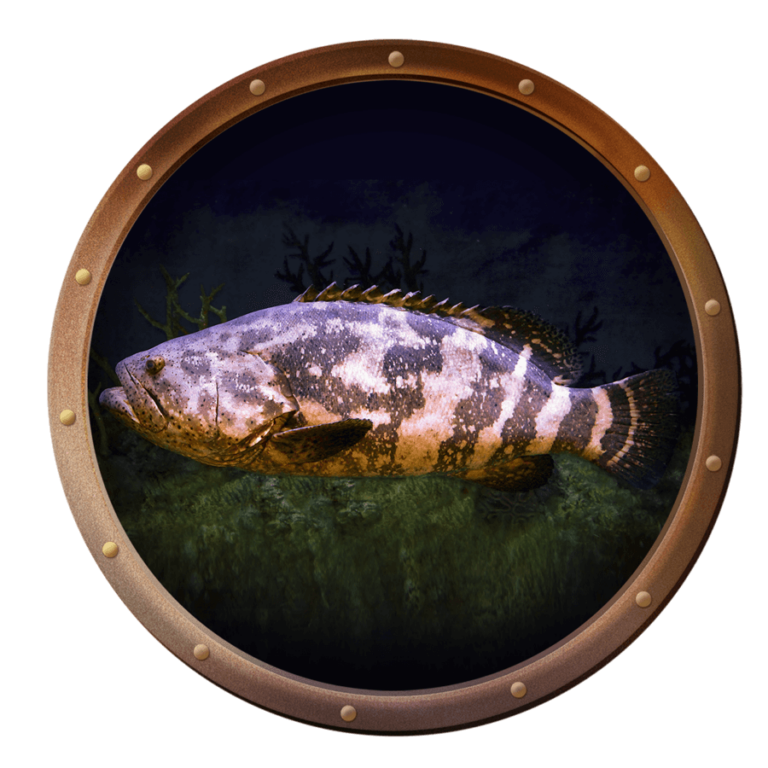
Goliath groupers have historically been heavily overfished and have suffered from destruction of their mangrove nursery habitat. This led to a major population crash by the 1970s. The goliath grouper was federally protected in 1990, totally banning all harvest of the fish. However, this is changing, as their population has been making a comeback.
Black groupers, Mycteroperca bonaci
Black groupers, Mycteroperca bonaci, typically have an olive or gray body with black blotches and spots, but they can quickly change color from completely black to white with only a black border on their fins for camouflage or communication. These fish can reach 5 feet in length and 180 pounds and live to be 30 years old. As with other grouper species, they start out female, and some change to males later in life.
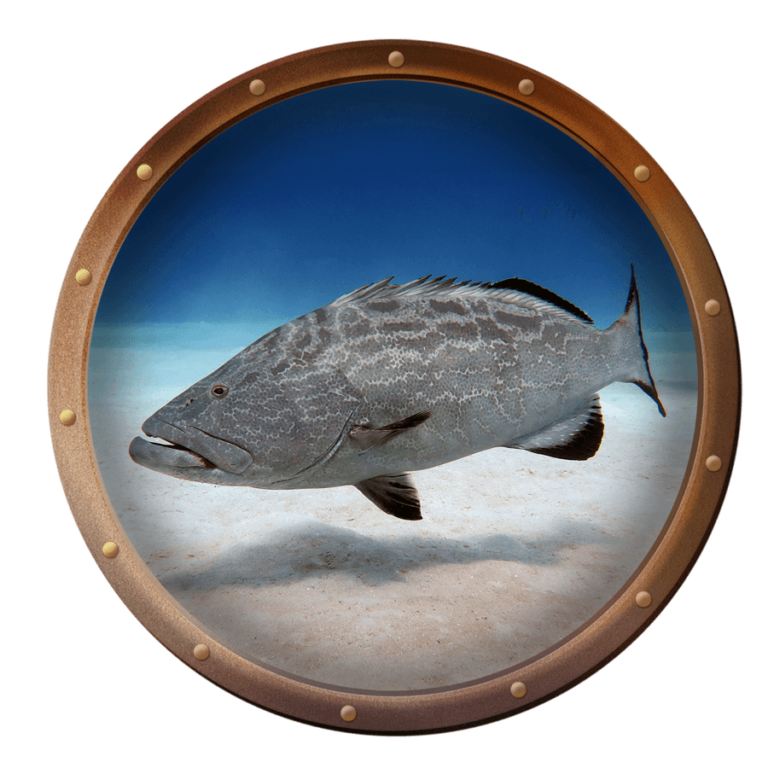
Red grouper, Epinephelus morio
Red groupers are slow growers but can reach 50 pounds and 50 inches in their 30-year life span. These fish start as females and mature at four to six years of age. Then, some transition to males at 7-15 years. They can change color from a dark reddish brown to a striped red and pink or white.
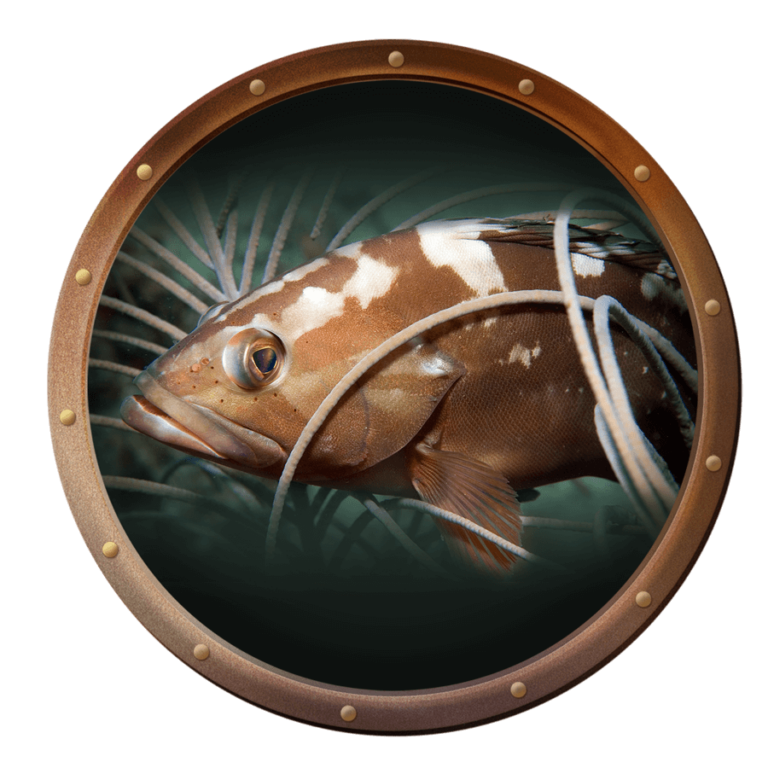
Red drum, Sciaenops ocellatus
Also known as redfish, this species is named for its color as well as its musical abilities. The red drum makes a drumming sound by flexing muscles on its swim bladder. This behavior occurs during spawning season and may help to attract mates and intimidate rivals. They are a copper-bronze color and may have one or more ocellated spots on their tail. The red drum is one of Florida’s most popular sport fish and is the most widespread estuarine fish, spending winter months in seagrass beds, over muddy or sandy bottoms, near oyster bars or spring-fed creeks. The first four years of life are spent here as well, making estuaries a vital nursery habitat for this fish. The red drum can reach 61 inches and over 50 pounds in their more than 40-year life span.
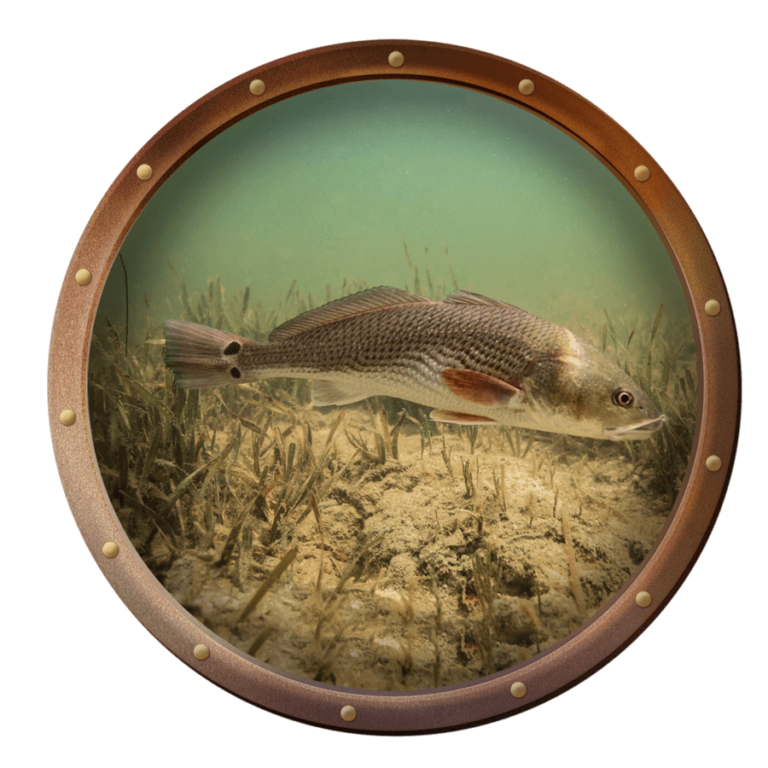
Bermuda chub, Kyphosus sectatrix
Also called the gray chub, they have a gray to silver football-shaped body and can change color to display white spots on a dark background when excited. This fish may reach 30 inches and will form large schools.

Hardhead catfish, Arius felis
The hardhead catfish has a brownish to gray-green body, with a white to yellowish belly. This is a bottom-dwelling species and possesses four barbels on its chin. It uses these whisker-like appendages to feel for prey in the sediment. They also have three sharp spines, one at the beginning of the dorsal fin and one on each pectoral fin. This fish can reach 24 inches and 12 pounds. Males of this species incubate their eggs in their mouths.
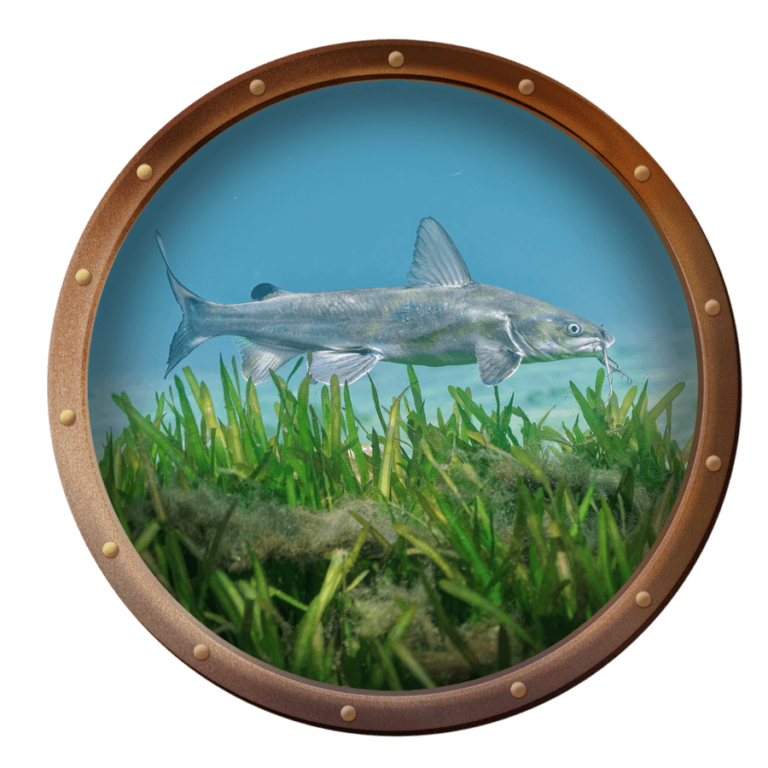
Sergeant major, Abudefduf saxatilis
Named for the five black bars on its body that resemble military stripes, these small reef fish are typically under 6 inches and form large schools. Males create nest sites on the sea bottom and guard the purple eggs that females lay.
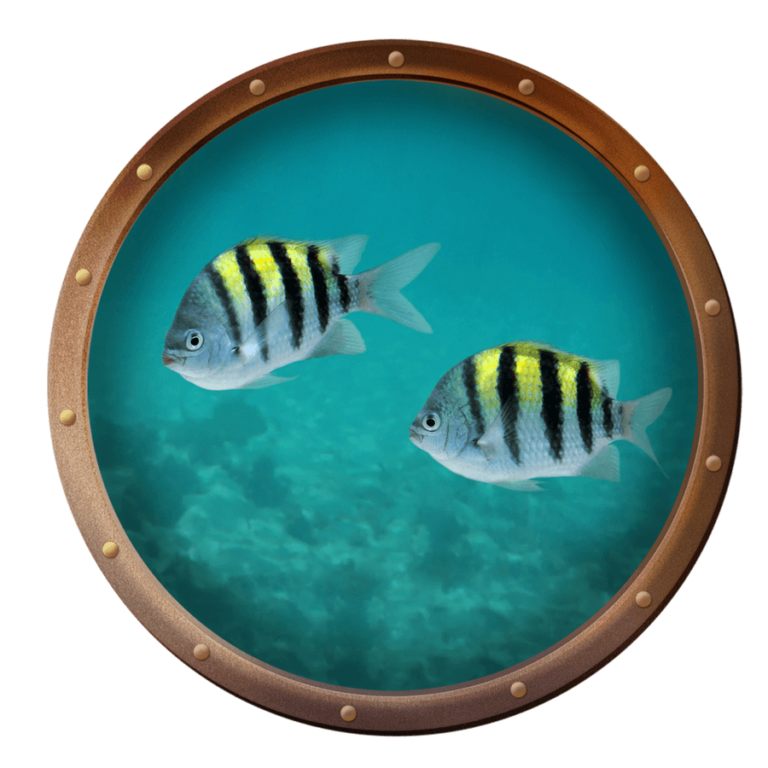
Bermuda blue angelfish, Holacanthus bermudensis
As suggested by its name, this fish has a blue-gray body color and yellow borders on its fins. They may have a blue smudge on their forehead but lack the ring that forms the “crown” of the queen angelfish. This fish can reach 14 inches and is an important reef grazer, feeding on sponges that can overgrow on corals.
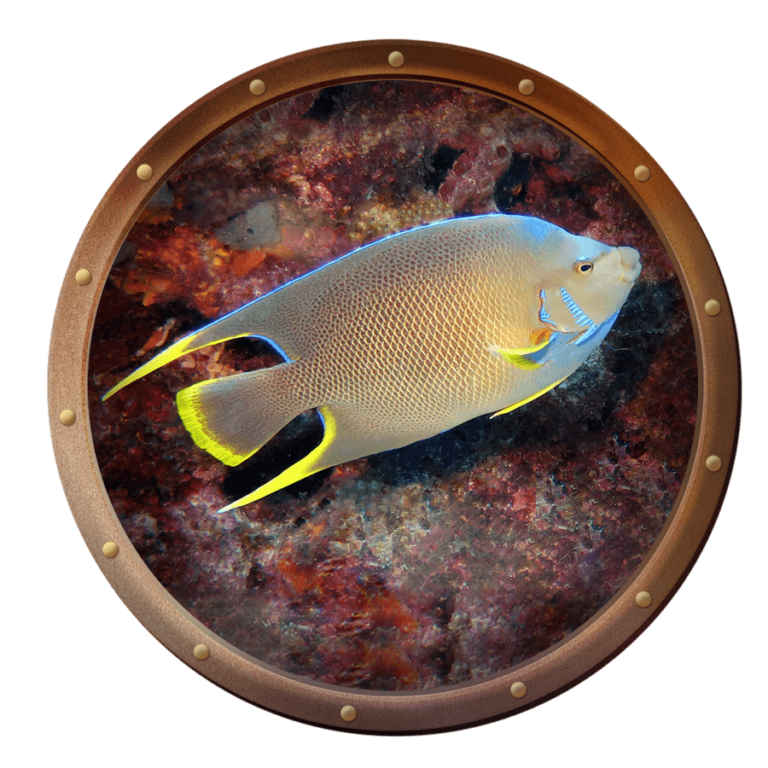
Longspine squirrelfish, Holocentrus rufus
The longspine squirrelfish is named for the elongated third spine on their anal fin. They have a red and white horizontal striped body pattern and can have a blotchy appearance. This coloration helps them to blend into the dark caves and crevices they live in during the day. They have large eyes that aid them while hunting for invertebrates at night. Squirrelfish are able to make vocalizations called “grunts” and “staccatos” to defend their territory or express alarm. Several of these fish will make alarm calls at the same time when predators come near. Look for this fish in the rocks at the deep end of the Atlantic Shores exhibit.
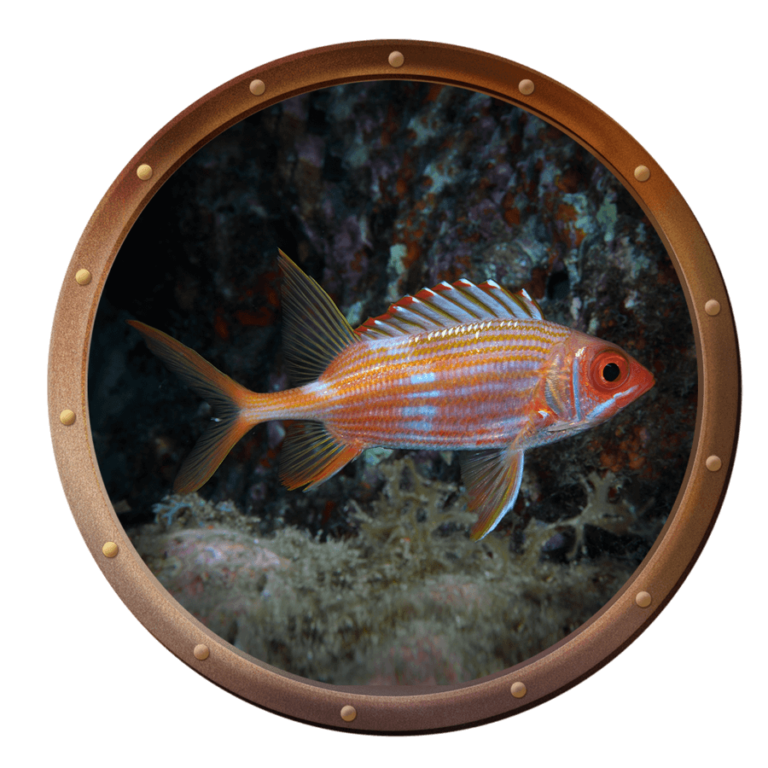
Green moray eel, Gymnothorax funebris
This is one of the largest species of moray eel, reaching lengths of 6-8 feet! Morays are benthic (bottom-dwelling) and solitary fish, often found in caves or holes in the coral reef — and even shipwrecks! Green morays are most active at night (nocturnal) and feed on small fish, crabs, octopus and shrimp. The green moray eel breathes by opening and closing its mouth to pump water over its gills, which can appear intimidating but is nonthreatening. The green moray eel gets its characteristic color from a mucus layer that covers its body. This coating protects the eel and prevents parasites from attaching to its skin.
